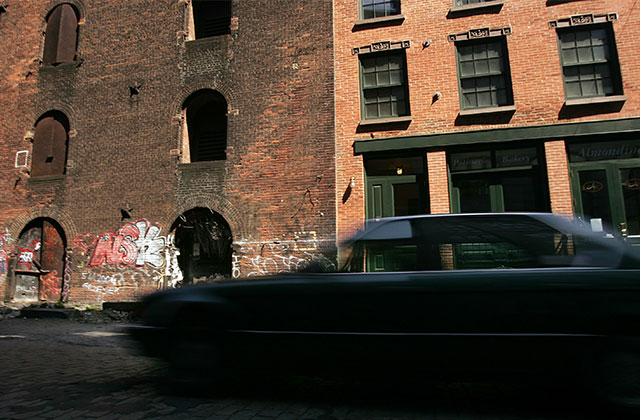We’re all-too familiar with the concept of gentrification—when a crumbling, low-income neighborhood improves due to new investment and becomes so desirable that longtime residents are priced out by more affluent, and often Whiter, people. A new Fusion article takes the phenomenon a step further by considering how displaced people of color are relocating to areas that are closer to industrial pollution. In turn, they get hit with health problems like asthma.
In Los Angeles and other big cities, minority groups are getting squeezed into more far-flung, polluted and less desirable areas as urban cores clean up and attract a wealthier, often whiter clientele looking for real estate bargains.
That’s posed a challenge for environmental and community groups as they grapple with how to ensure better environments for the nation’s most vulnerable populations and to keep them in their homes. Tackling the twin pressures of environmental racism and gentrification all at once is not easy, as places like Inglewood demonstrate.
In certain instances, a community may do the necessary work to clean up its neighborhood—and then lose it to new residents. “If the issue is you’re trying to get your kid’s school cleaned up, that’s all you can work on, and then it’s onto the next thing,” Leslie Fields, Sierra Club’s environmental justice director, told Fusion. “And the next thing you know, everything is magically delicious, and everyone’s trying to move in.”
One part of environmental gentrification is transportation, as I reported for YES! Magazine earlier this year. Communities bring in public transportation to reduce traffic and vehicle emissions, but, when protective measures aren’t in place, residents are forced out.
In Los Angeles’ Chinatown, reported YES!, communities were able to fight back and demand that building developers include affordable housing for “extremely low-income households,” four-person households earning $25,600 or less.
The city’s resilience has dominated headlines this year. For example, a group of Chicana cyclists, who were featured in a documentary screened at this year’s South by Southwest, are fighting gentrification with their provocative exterior and motto, “Ovaries so big, we don’t need no balls.”
Fusion reported on the women in March, where their founder, Xela de la X, said, “Coming from working-class, under-resourced communities, we fight back against gentrification, the war that threatens our access and mobility, as we fight against deportation and detention centers.”
In Boyle Heights, a predominantly Latinx community, the Guardian reported in April about residents who kept it real (maybe a little too real?) with realtors scoping their neighborhood for cash, inviting clients to check out property. One realtor planned to hold a bicycling tour, but activists responded by planning a protest. In such instances, realtors fled, fearing violence, the story reports.
Read the complete Fusion story on environmental gentrification here.
